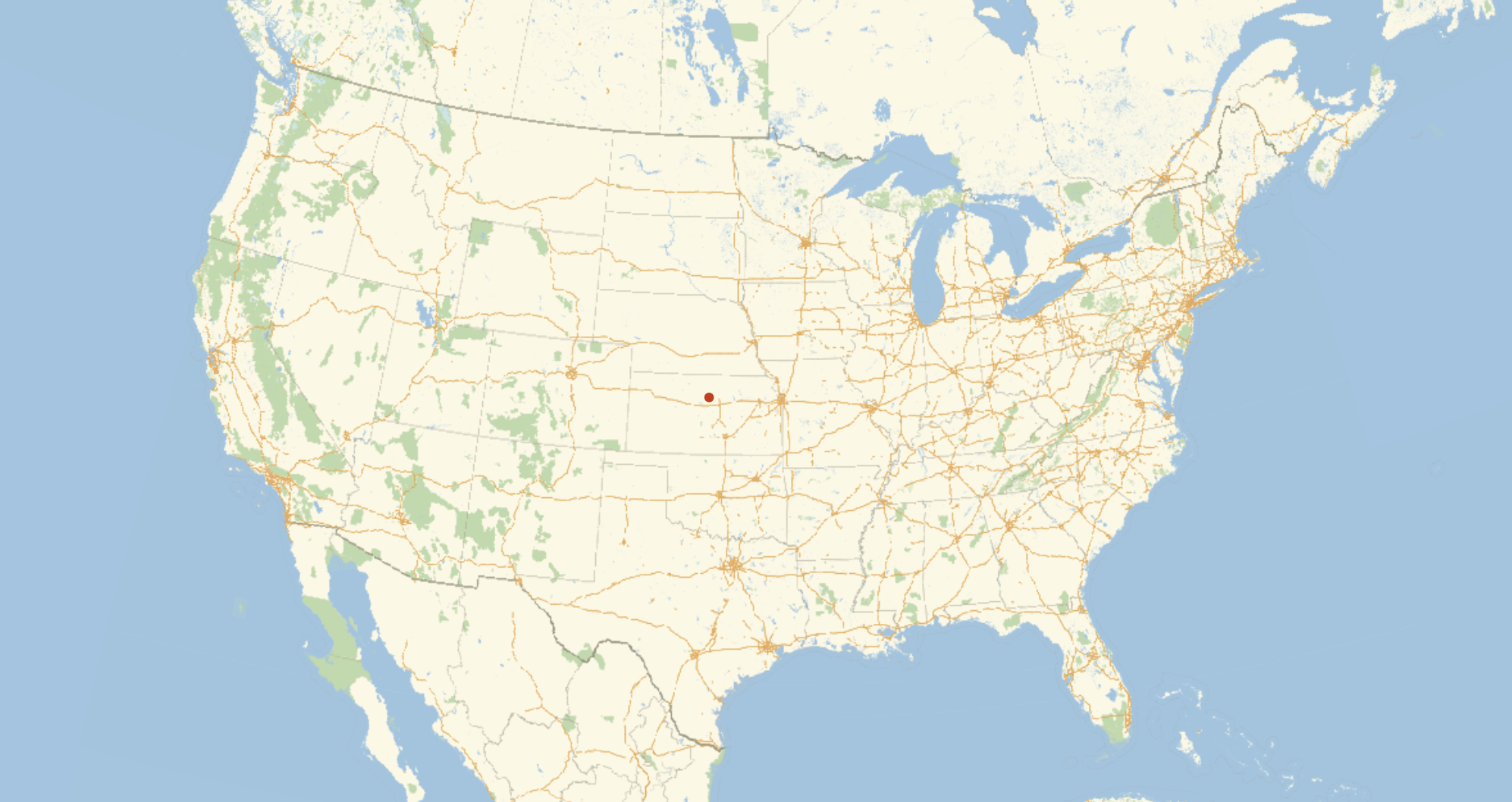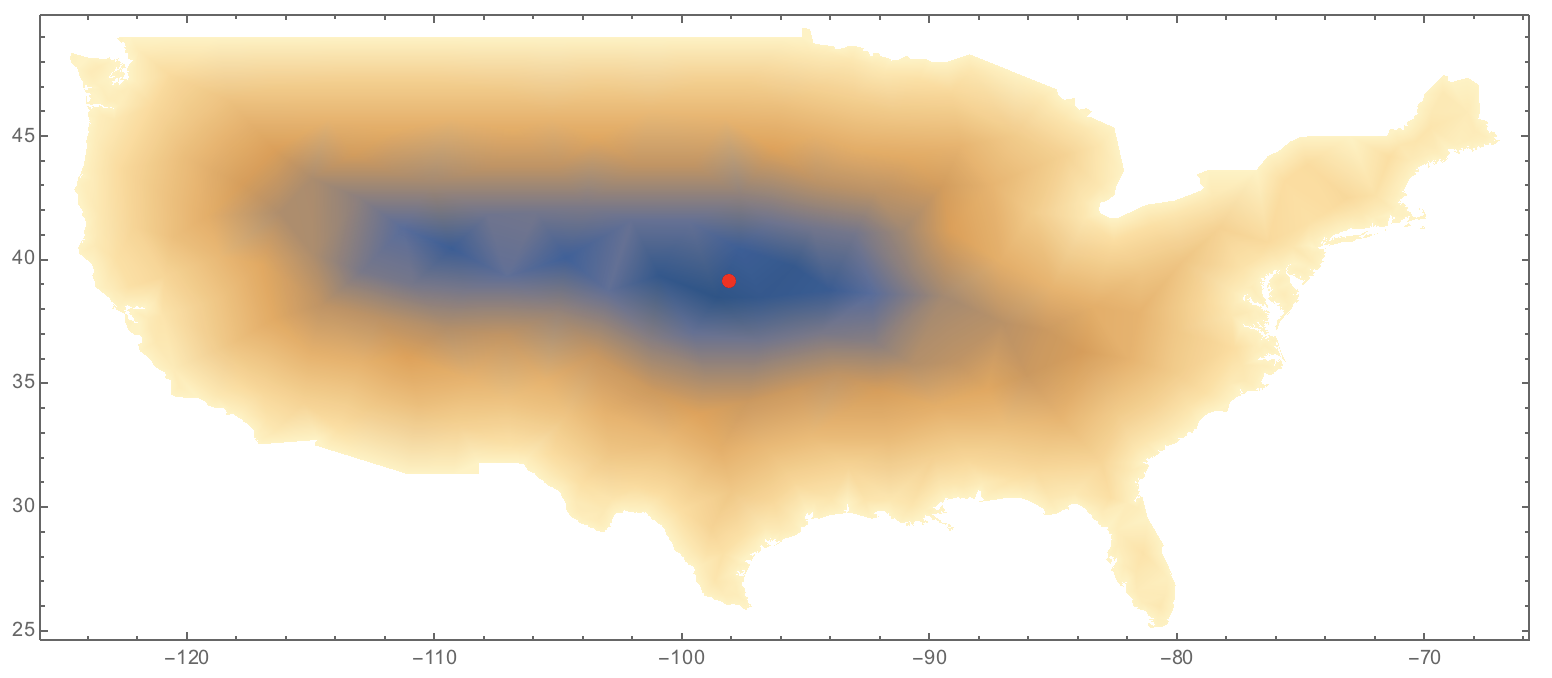So this is generally referred to as a pole of inaccessibility. These are nice, but there are a few cases where they can give strange results. For example, the red dot represents the pole of inaccessibility in this 2D shape, but I would probably not call it the "center":

There are some nice ways we can calculate the poles of inaccessibility though. As you say, that method could be made slightly more accurate (or more consistent / projection independent) with GeoDistance. The problem is that, to my knowledge, there isn't a nice function for the signed GeoDistance from a geo-polygon. I think there is a way though that is equivalent.
The "AzimuthalEquidistant" projection has a very convenient property. To quote Wikipedia, "all points on the map are at proportionately correct distances from the center point". Suppose we have two GeoPositions, a, and b. The ratio between the distance to the border from a, and the distance to the border from b, should then be the same as the ratio between the distance to the border from a in the AzimuthalEquidistant projection centered on a, and the distance to the border from b in the AzimuthalEquidistant projection centered on b.
With that, we can make a function that will give proportionally consistent distances to the coast without any use of GeoDistance.
distanceFromBorder[r_, pos : GeoPosition[{_?NumberQ, _?NumberQ}]] :=
SignedRegionDistance[
projectMesh[r, {"AzimuthalEquidistant", "Centering" -> pos}],
GeoGridPosition[pos, {"AzimuthalEquidistant", "Centering" -> pos}][[1]]
]
We then just have to minimize that function to get the point farthest from the borders.
poi = GeoPosition@Reverse@NArgMin[distanceFromBorder[r, GeoPosition[{y, x}]], {x, y} \[Element] r]
Out[]= GeoPosition[{39.2011, -98.1285}]
GeoListPlot[poi, GeoRange -> Entity["Country", "UnitedStates"], ImageSize -> 1000]

DensityPlot[distanceFromBorder[r, GeoPosition[{y, x}]], {x, y} \[Element] r, AspectRatio -> Automatic, Epilog -> {Red, PointSize[Large], Point[Reverse@poi[[1]]]}]

It is interesting to see how close though the point you got with that projection, and the point you get with this method. It looks like they are only a few miles apart.